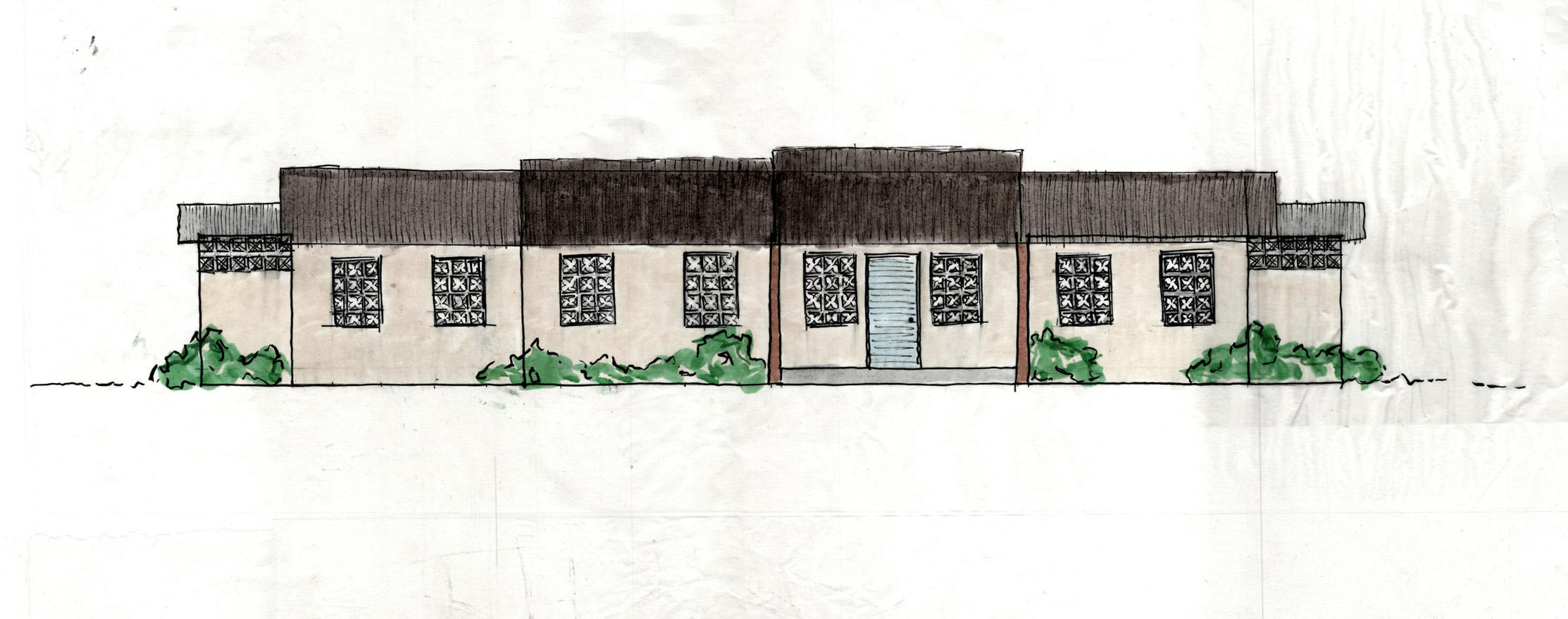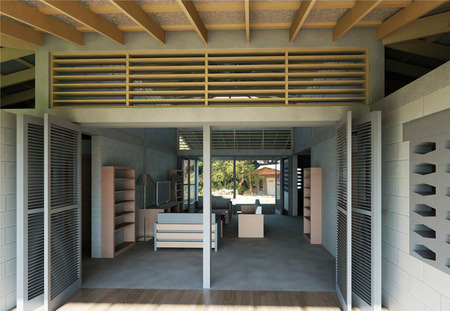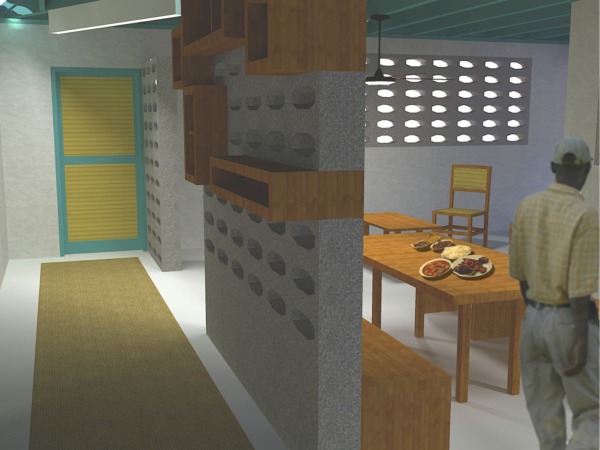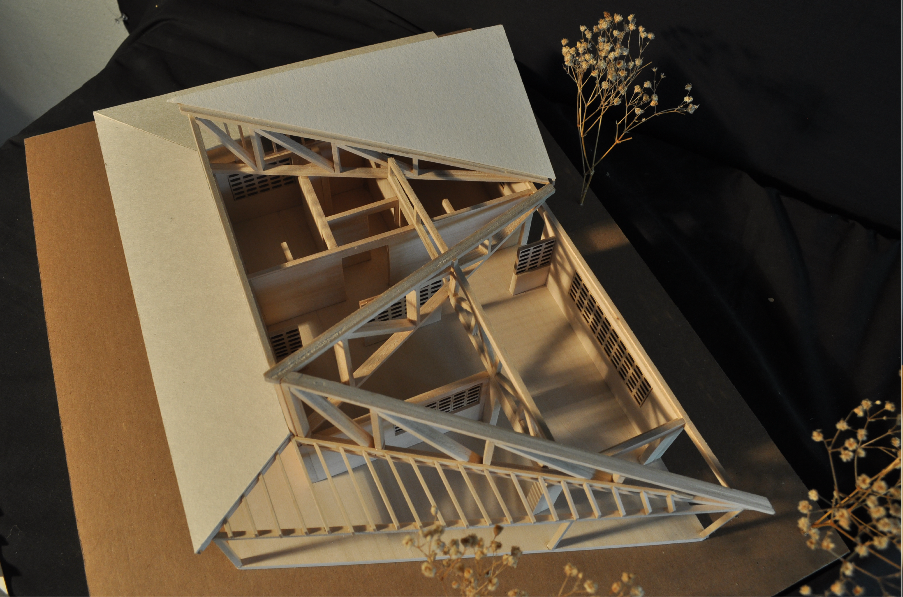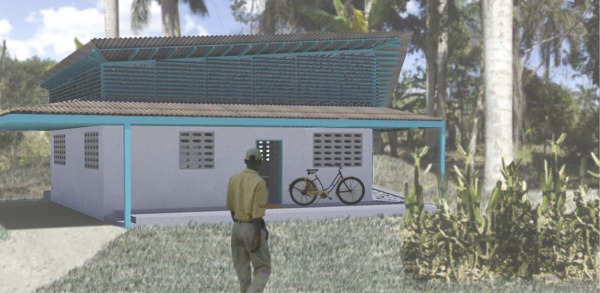Teacher Roommate House: Final Proposal
 Saturday, May 5, 2012 at 5:01PM
Saturday, May 5, 2012 at 5:01PM 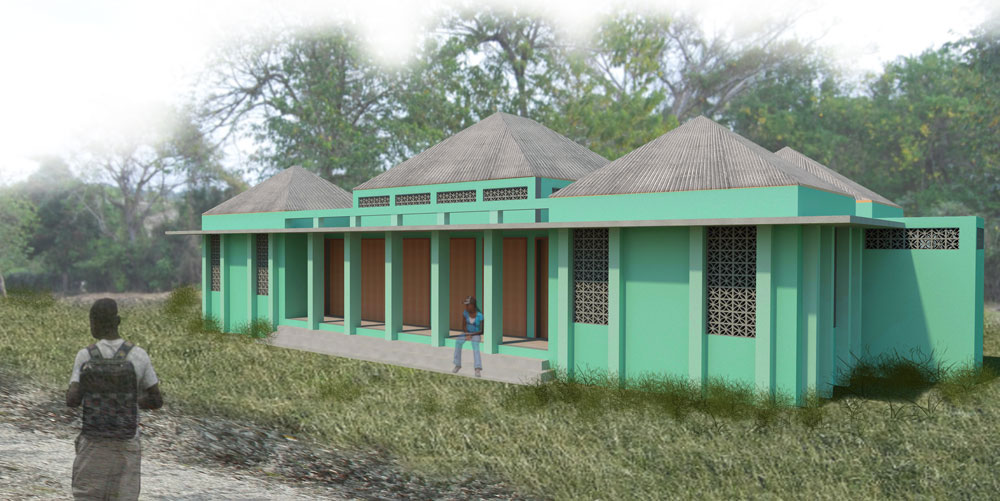
Specifications:
- 4 Bedrooms
- 2 Full bathrooms
- 2043 sq. ft. (nominal)
- 1820 sq. ft. (habitable)
Design Goals:
- Simple symmetrical plan
- Large shared living space that opens to the outside
- Use materials found or produced locally in Haiti
- Passive ventilation for all rooms
- Apartment layout
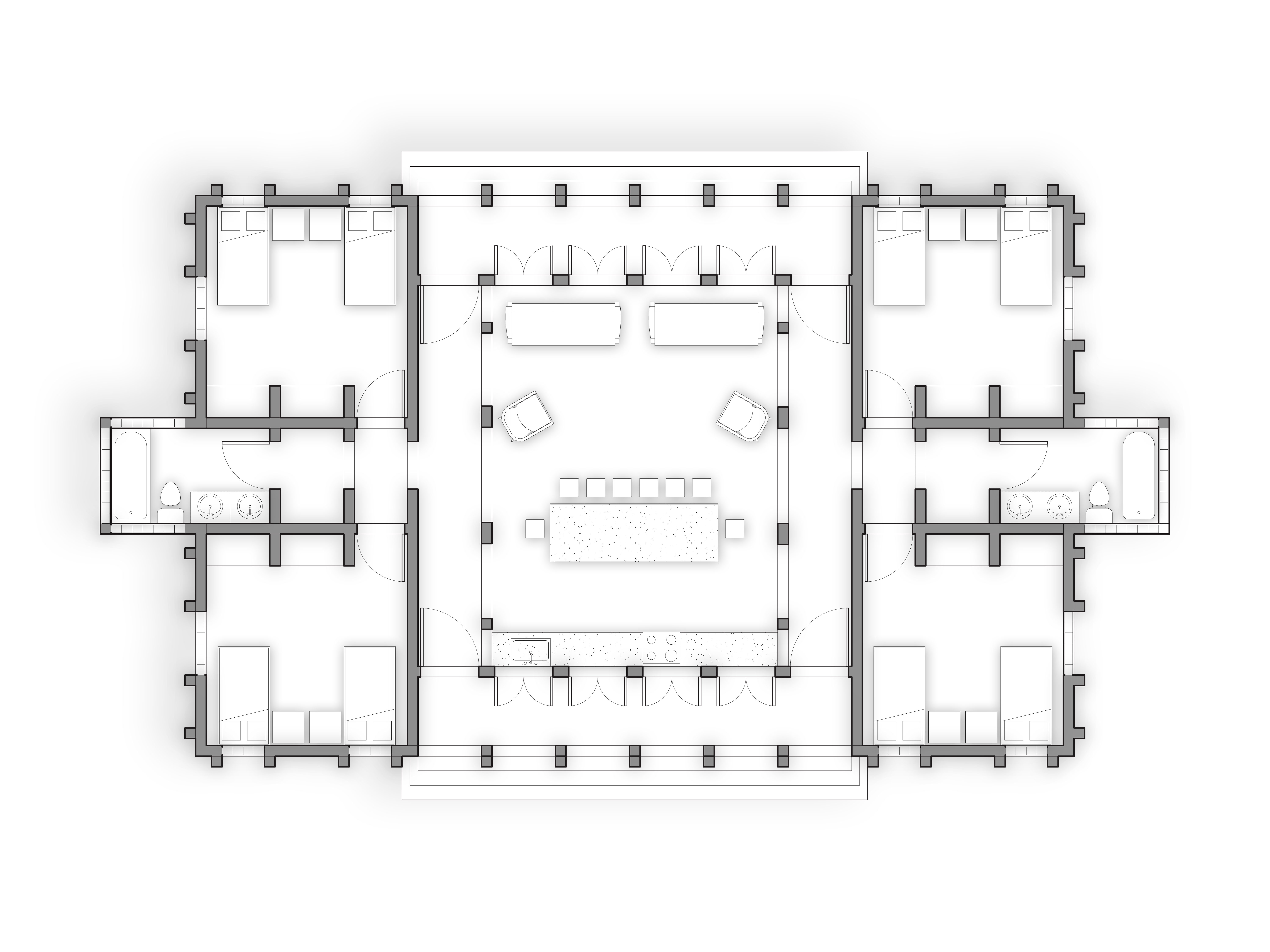
The final design of the Teacher Roommate House is designed to demand interaction. The occupants for this house are envisioned as being teachers that work at the (School) up the road.
The layout of the floor plan mimics a dormitory style plan where the bedrooms surround a large open living space. Included in this living space are the kitchen, dining and gathering spaces. Wicker panels built into the exterior walls of the living space open up to covered porches giving the space a public feel. Oftentimes in Haiti, visitors are only invited onto the porch and not into the houses.

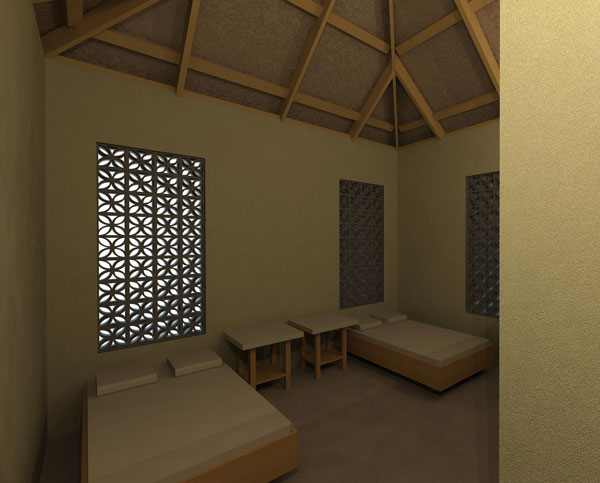
Each end of the house is a two-bedroom module able to sleep up to four people. Bathrooms and storage spaces serve as buffer areas between the two bedrooms and the bathrooms are extruded to allow. Vent block windows in all the rooms allow cross ventilation of all spaces.
The roofing design on the house gives hierarchy to the spaces. The largest hip roof is over the primary living space, while smaller hip roofs are over the secondary bedroom spaces. A flat roof covers the tertiary restroom and circulation spaces.
The exterior design of the house has a rhythm to it. The bedrooms and living space each have exterior walls that extend up past the ceiling line of the house. Along the exterior there is a horizontal shading plane that helps with sun shading on the exterior of the house. Pilasters along the exterior walls assist in holding up the cantilevered roof as well as add a visual sense of rhythm.
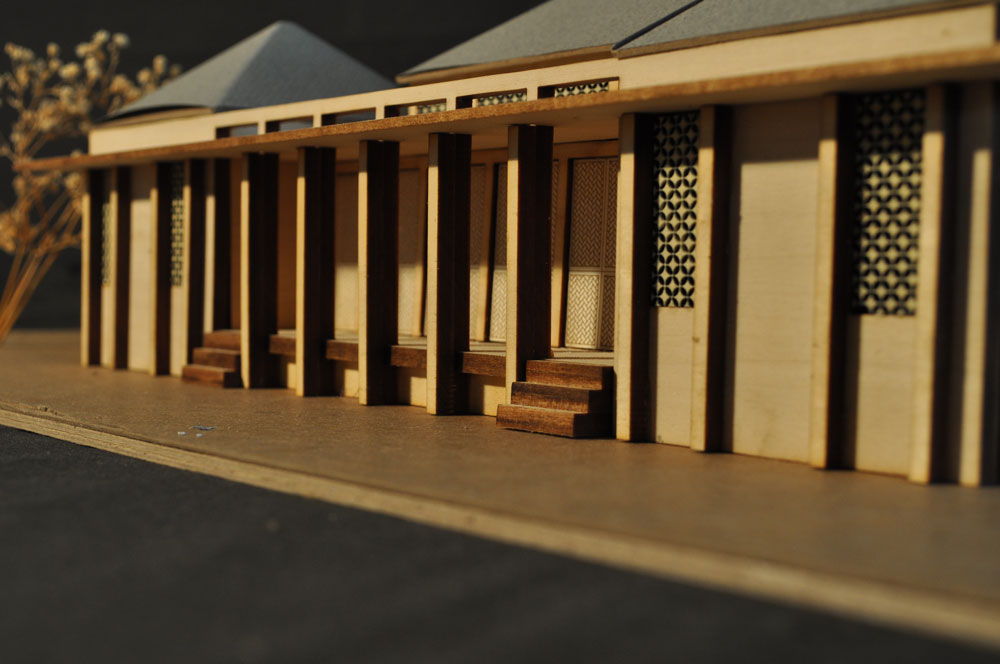
Lastly, the house was designed to be a representation of its occupants. Its formal appearance shows strength with a hint of monumentality. This aspect was included in the design to give importance to the teachers and make them important in society.
 Haiti,
Haiti,  clerestory,
clerestory,  pilasters,
pilasters,  roommate,
roommate,  ventilation in
ventilation in  Cory Wilkerson,
Cory Wilkerson,  Emily Fike,
Emily Fike,  Emmie Corgan,
Emmie Corgan,  Julie Moore,
Julie Moore,  Team 7
Team 7 





